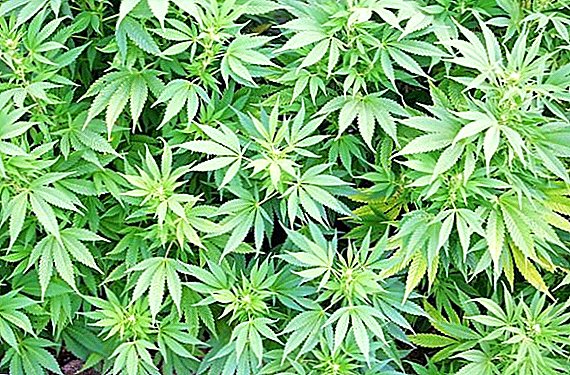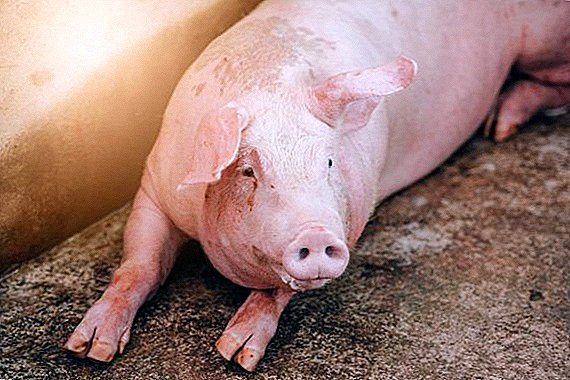 Worms are a fairly common problem in a pig farm that can provoke serious pathologies. Infection of only one individual can cause damage to the entire population. How to find out that the animal is infected with parasites and how to conduct proper deworming, and will be discussed in this article.
Worms are a fairly common problem in a pig farm that can provoke serious pathologies. Infection of only one individual can cause damage to the entire population. How to find out that the animal is infected with parasites and how to conduct proper deworming, and will be discussed in this article.
Why pigs have worms
Domestic pigs sometimes become victims of viral or parasitic pathogens.
Worm invasion occurs in such cases:
- because of the use of dirty water;
- after a walk through the greenery in which the larvae of dangerous parasites live;
- Digging into the ground with a round tip of the snout and eating some of its quantity, the pig inserts helminth larvae eggs into its body (after waiting for favorable conditions, the larvae actively reproduce, which further leads to the appearance of worms from the eggs);
- through the faeces of the infected part of the herd;
- the cub may become infected through the milk of an infected female.
Did you know? During the day the pig is able to drink 14 liters of water.
Worm species
Here are the varieties of parasitic worms that can be found in the body of pigs:
- Roundworm - the most common species from which livestock suffers throughout the world. The maximum length of these parasites is 30-35 cm. One adult female of this species is able to lay up to 200 thousand eggs in a living organism.
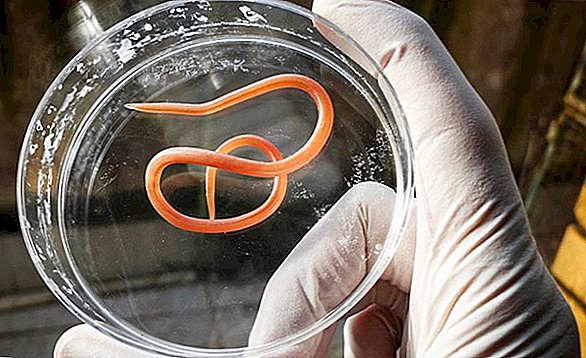
- Nematodes (roundworms) - a species that affects not only the intestines, but also other internal organs (liver, kidneys, lungs). The length varies from 1 mm to several meters. One female lays several thousand eggs.

- Trematodes - worms up to 15 cm long, sucking the blood of an animal. Being infected with this parasite, the pig further becomes ill with trematodosis.
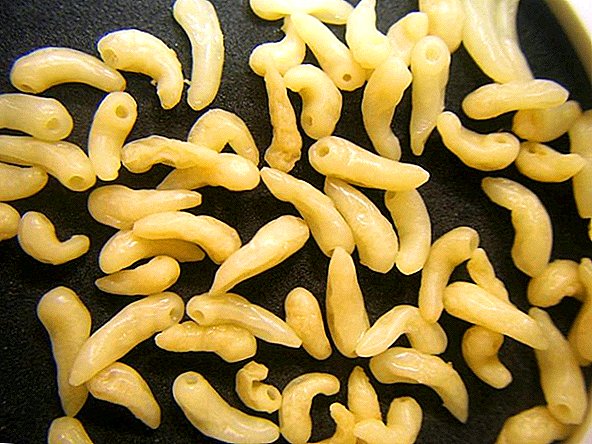
- Cestodes - Dangerous worms reaching several meters in length. They stick to the internal organs and select all the most useful from the feed consumed by the cattle.
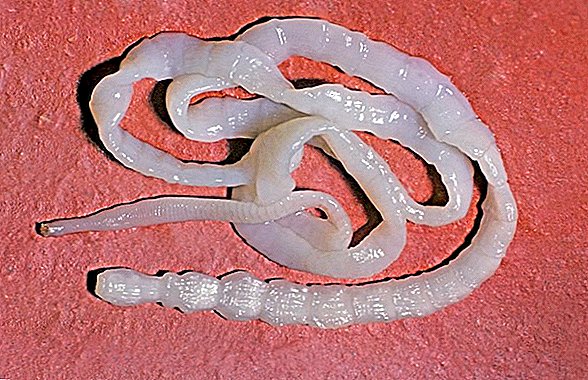
- Scratch - parasites that cause a disease called arkantotsefalez in artioptera. Their length varies from 3-4 mm to 70 cm.
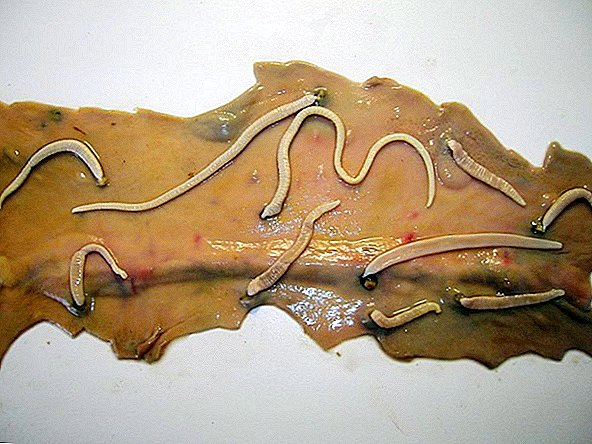
How to find out if pigs have worms
Before you begin treatment with the aim of removing worms, make sure that parasitic worms are actually present in the body of an artiodactyl.
Infection with worms is manifested by the following symptoms:
- the animal eats little or loses interest in feed;
- boar rapidly losing weight;
- an increase in appetite is sometimes observed, but the animal continues to lose weight;
- perhaps increased thirst;
- the appearance of dry cough and wheezing;
- fever;
- lack of physical activity;
- the individual begins to itch;
- indigestion (diarrhea, bloating, vomiting);
- nervous behavior, increased aggression, refusal to contact the common herd.
Did you know? The squeal of a pig reaches the volume of 115 decibels. This figure is three times higher than that of a supersonic airliner.
Helminthiasis is dangerous because beginning farmers, because of inexperience, often take its first signs for a cold, and instead of antihelminthic therapy, they give the animal medicines for the common cold. The similarity of symptoms is due to the fact that eggs laid by females move along the nasopharynx and throat. Incorrectly diagnosed, it gives the parasites time to breed throughout the body, as a result, the treatment of ailments is significantly inhibited.
How to treat worms in piglets and pigs
Consider in detail the question of when and how to treat an infected individual.

Medicaments
To quickly and effectively eliminate the trouble that caught you by surprise, use the medicines of direct action:
- Levamisole - popular effective solution for injections. The maximum dosage administered to the animal should not exceed 20 ml.
- "Gigrovetin" - drug in the form of an additive to the feed. Acceptable use in dry, boiled and steamed types.
- "Alben" - drug of a wide range of influence. A pill is injected once into the mouth of an infected individual or cub. It is also practiced mixing the drug with a concentrated feed.
- "Tetramizole" - medicine in the form of powder or granules, copes well with ascariasis, metastrongylosis, esophagostomosis and trichocephalosis.
- "Ivermek" - medical preparation in the form of a solution for intramuscular injection. To pigs this medicine for worms is prescribed only after examination by a specialist. The dose is calculated based on the severity of the particular case and the weight of the animal.
Important! Only a veterinarian can tell whether a pig should be given a medicine. In addition, before using any drug, carefully read the instructions for use.
Folk remedies
Herbal remedies are more gentle for the body.
Try to solve the problem with parasites using the following simple recipes:
- Add fresh garlic to feed. This product must be dosed, as pigs will not eat too sharp food - and take 1 g of animal weight of garlic 1 kg of animal weight. Crush the product, mix thoroughly with feed. Keep in mind that it will take a long time to treat an animal with this natural remedy.
- All summer, let the cattle tansy flowers. Means is suitable for boars weighing more than 30 kg. A small amount of dried flowers (1 teaspoon) can be mixed with a morning meal or water the animal with a weak decoction of flowers. The duration of therapy depends on how long the parasites depart.
Preventing pigs from worms
At the initial stage, the symptoms of the disease are usually mild.

To reduce the risk of infection, conduct mandatory prevention:
- Clean the pens once a day and disinfect them twice a week. Periodically whiten the pens with lime and treat with the liquor solution.
- Change bedding daily.
- Before each feeding procedure, clean the feeders from food debris and manure.
- Once every 10 days, handle the feeders and drinking bowls with boiling water.
- Buying piglets from unfamiliar and unverified distributors, give them a "rut" of worms. At the end of the first procedure, animals can be placed in the barn. But after a month and a half deworming needs to be repeated.
Important! In the process of cleaning the pigsty inspect feces for the presence of worms - worms are quite noticeable, they are difficult to miss. Infected feces clean in a protective mask and clothing, because pig worms can infect humans. Such manure is subjected to burning, it cannot be used as a top dressing for plants.
Is it possible to slaughter and eat meat
The treated pig meat is suitable for culinary use. If the presence of parasitic worms was detected during the slaughter of livestock, such meat is most often utilized. In some cases, the carcass remains partially edible, but the internal organs are destroyed. The fact is that after some types of intestinal worms, it is enough to conduct additional heat treatment of the carcass. Only a professional can help determine the type of parasite.
Individuals who have not undergone planned treatment and preventive measures from invasive material are prohibited from selling. Before selling pork, the livestock breeder must obtain certification from the veterinary service confirming the quality of meat products. Any signs of helminth infection are the reason for imposing restrictions on the enterprise.
Read also what other diseases are in domestic pigs.
We hope our advice will help you in the pig business and you will no longer have a question about what to give when detecting worms in cattle. Watch the animals carefully, their behavior, and if you find a parasite, immediately begin treatment. If the measures taken by you do not help artiodactyls, as well as in case of deterioration of their condition, it is necessary to immediately contact a veterinarian.













